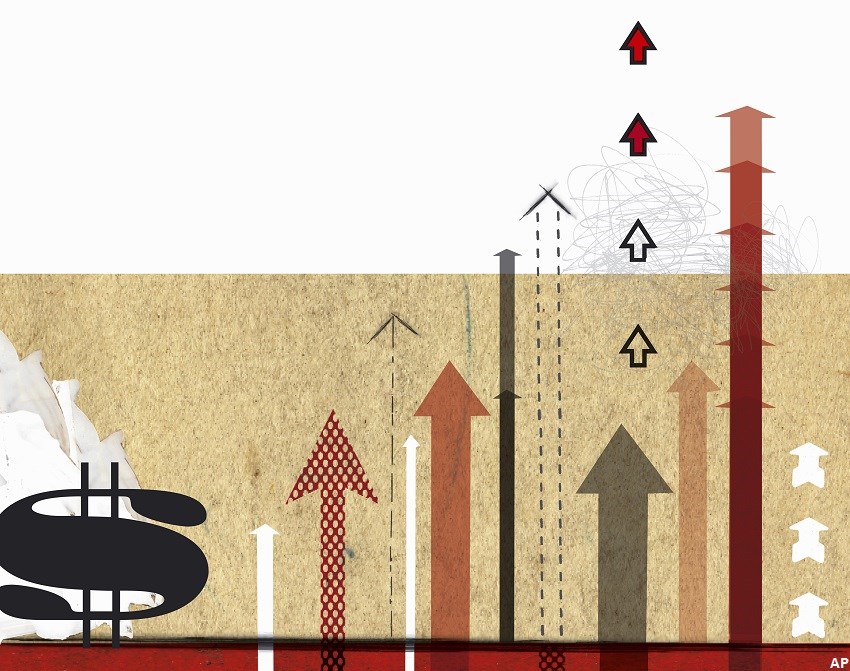
Global equity markets are in turmoil with the Ukraine-Russia conflict and uncertainty about interest rates. Yet when veteran stock picker David Fingold is asked whether he feels as if he is caught between the proverbial rock and a hard place, he merely shrugs.
For Fingold, it’s a matter of keeping a steady hand in managing the $3 billion 4-star silver-rated Dynamic Global Asset Allocation Fund Series F, while searching for attractive values that can weather the storms. “I never think about [the notion of being caught between a rock and a hard place] because we are always presented with opportunities and challenges,” says Fingold, who joined the investment team at Toronto-based 1832 Asset Management Inc. in 2002, after several years of working for a private merchant bank and Slater Steels Corp.
Fingold is currently lead manager of several U.S. and global Dynamic-branded strategies. “Obviously our goal should be minimizing the exposure to the challenges and to try to find ways to capitalize on the opportunities. In the back of my mind, I am always reminded of the greatest quote from Ned Goodman [founder of Dynamic Mutual Funds], which is: I am an optimist because I never met a rich pessimist. We try to avoid the things that make us pessimistic and focus on those things that make us optimistic.”
Warning Signs in Widening Credit Spreads
There are certain areas in global equity markets that Fingold says he will avoid, and the same applies to fixed income markets. “We have a lot of flexibility. We saw that credit spreads were going to widen, so we were not exposed to corporate bonds. We saw that when the stock market corrected, interest rates were refusing to fall, so we have not had exposure to duration,” says Fingold.
“The longest term maturity is a 12-month U.S. treasury bill when it was acquired. It is now closer to 11 months.” Moreover, Fingold notes that the global fixed income benchmark has “quite a bit of exposure” to credit. In a similar vein, he argues that “many corporates and governments ‘termed’ out their debts so that the benchmark and the fixed income universe have a lot more duration than they did [previously].”
Fingold notes that the narrowest spread for investment-grade corporate bonds in 2021 was about 46 basis points (bps) over corresponding U.S. treasuries. Since then the spread has almost doubled to 86 bps over U.S. Treasuries. “The widening that we have seen lately is almost the same as what happened in the fourth quarter of 2018. Back then, the Fed hiked rates even though financial conditions were tightening. Then we had the December 2018 correction and the Fed had to moderate its stance. We are getting close to those levels. With the benefit of hindsight, avoiding corporate credit has been a good move since the narrows of the cycle.”
Not Necessarily Value Territory Yet
Although U.S. equities have sunk about 18% since the start of the year, Fingold is reluctant to categorize U.S. stocks as approaching good value. “The reason we talk so much about U.S. equities is because the world is America-centric. The U.S. is the world’s largest economy and accounts for the majority of the world markets’ float,” observes Fingold. “But it’s important to understand that a lot of the U.S. market capitalization comes from multinationals. In various years, the operating profits of the S&P 500 can be over 40% derived from outside the U.S.”
Fingold does not take a view that the equity market has to perform in a certain way to yield good value. “Ultimately, what is going to determine where the valuation of the market goes is going to be driven by credit markets and commodities and the U.S. dollar,” observes Fingold. “The Federal Reserve is trying to tighten financial conditions and part of financial conditions is equity volatility and partly credit spreads and the Fed’s senior loan officer survey, which is the provision of bank credit.” But Fingold says it’s unclear whether officials at the Fed are satisfied those spreads have achieved the goal of tightening. The same issue applies to equity volatility and whether it’s in line with the Fed’s goals.
Follow the Money
“I don’t spend a lot of time looking at these things. We go into risk management mode when we see credit spreads widening, and that’s what has been happening this year,” observes Fingold. “The idea is that there is some distance the market needs to fall as credit markets begin to firm, and money is flowing more readily to companies to finance their operation, so then the market could be cheap. If there is an issue that causes credit markets to tighten further, one needs to be concerned about the stock market,” says Fingold, adding that his team is more concerned about what is driving the market than other people’s preoccupation with whether the market is approaching cheap valuations.
Is it Russia or Inflation?
Is the biggest hurdle for global markets the worry of runaway inflation or the Russia-Ukraine conflict? “There is a conflict in Eastern Europe and it comes with a very high humanitarian cost and not without precedent. But it is more impactful to the European consumer than it is to North American consumers,” observes Fingold. “The inflation challenge is more difficult [in Europe] because it requires that Europe makes further investments in conserving energy and diversifying their sources of energy. The same thing applies to their food supplies. They have a bigger inflation problem than we do. Inflation will get better in U.S. and Canada, but will be tougher for longer in Europe,” argues Fingold, adding that the challenges may be prolonged in Europe because credit conditions in Europe tend to lag those in the U.S. by about 12 months and the euro is up against the U.S. dollar which remains the globe’s strongest currency.
From a performance standpoint, Dynamic Global Asset Allocation F has returned -15.18% for the year-to-date (May 20) and lagged the Global Equity Balanced category which returned -12.05%. However, it has performed better over the longer term. For the past five and 10-year periods, the fund returned an annualized 5.23% and 8.89%. In contrast, the category returned an annualized 3.79% and 7.17% for the corresponding periods.
From a strategic perspective, the fund is comprised of a mix of 32% cash and 68% equities. But Fingold hastens to point out that the bulk of the cash is in government bonds that expire in less than twelve months. On the equity side, about 30% of the fund is held in U.S. stocks, and 32% in international equity names. On a sector basis, industrials comprise the largest sector at 23%, followed by 19.7% in financial services, 16.8% in technology, and 8.8% in energy.
Running a concentrated portfolio of 28 holdings, Fingold cites long-time names such as Elbit Systems Ltd. (ESLT), the largest defence contractor in Israel and the leading producer of drones, night vision systems and cyber-technology to defence organizations. The stock has a market cap of 30 billion NIS (C$11.4 billion) and is trading at 20 times 2023 earnings.
“Over the last few years, even as defence spending was slowing, they had best-in-class backlog growth. That’s because of their technological edge,” says Fingold. “Unfortunately, the world is not a safe place. Countries that thought they could cut, or not increase, their defence budgets, have realized that they don’t have a choice. There is tremendous upside in defence spending just within NATO [North Atlantic Treaty Organization]. And NATO is an important revenue source for Elbit.”
Another top holding is AstraZeneca PLC (AZN), a British-Swedish pharmaceutical and biotechnology company based in Cambridge, England. “It’s more of a household name,” says Fingold, noting that the firm has a market of (Sterling) 155 billion, trades at 16 times forward earnings and pays a 2.1% dividend yield. “We like their pipeline because they have some very interesting therapies, including some antibody drug conjugates [for cancer treatments]. That is something very difficult to produce, so there are not a lot of competitors in that area. And there are not many losses of exclusivity foreseeable in the future.”
Healthcare stocks underperformed in strong economic growth in 2020 and 2021. “As economic growth is moderating it gives healthcare an opportunity to do better,” says Fingold. “I’ll remind everyone that healthcare is one of the three best performing sectors of all time. It’s shown that they have been very defensive in corrections and bear markets.”





















